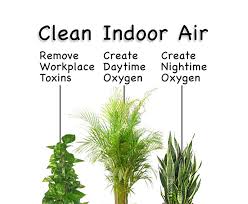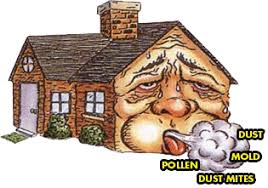WHAT IS THE QUALITY OF AIR IN YOUR HOME?How do you feel when you suddenly open your windows and feel
the rush of cold fresh wind rushing through your nostrils or the feel you get
when you lift those long thick curtains
and feel kool?INDOOR AIR QUALITY, simply means the quality of air in your
home, your living environment.Most times when we think of air pollution, we think its only
outdoor air that can be polluted.


In door air can be polluted and can pose serious health
problems.We tend to think of air pollution as
something outside -- smog, ozone, or haze hanging in the air, especially in
summer. But the truth is, the air inside homes, offices, and other buildings
can be more polluted than the air outside. The air inside your home may be
polluted by lead (in house dust), formaldehyde,
fire-retardants, radon, even volatile chemicals from fragrances used in
conventional cleaners. Some pollutants are tracked into the home. Some arrive
via a new mattress or furniture, carpet cleaners, or a coat of paint on the
walls.
Indoor
air quality cause some form of discomfort. Most people
feel better as soon as they remove the source of the pollution. However, some
pollutants can cause diseases that show up much later, such as respiratory
diseases or cancer.Causes of poor indoor-air quality,
polluting indoor-air.·
Mold and pollen
·
Tobacco smoke
·
Household products and pesticides·
Gases such as radon and carbon monoxide·
Materials used in the building such as asbestos, formaldehyde and leadSometimes a group of people have symptoms that seem to be
linked to time spent in a certain building. There may be a specific cause, such
as Legionnaire's disease. Sometimes the cause of the illness cannot be found.
This is known as sick building syndrome.


Simple Steps
to Improve Indoor Air Quality·
Plants some( pot- plants) around you.·
Keep your floors clean, fresh and dry. (mop,
sweep, and dry up)·
Keep your clothes clean, dry and fresh·
Keep refuse far from kitchen and living room·
Clean up pet litters as quick as possible 
Why does Indoor Air Quality matter?The
air quality of our indoor environments affects our health and often contributes
to structural degradation and building failures within our homes.Consider the Facts·
According to the American Lung Association
of Minnesota, elements within our home and workplaces have been increasingly
recognized as threats to our respiratory health. The most common pollutants are
radon, combustion products, biologicals (molds, pet dander, pollen), volatile
organic compounds, lead dust and asbestos.
·
There are an estimated 40 million individuals in the United
States who are affected by allergies. Learning how to control a homes
environment to reduce allergen levels is important for managing allergies and
asthma. Individuals who suffer from asthma, or have other respiratory illness
may potentially be at a greater risk for health complications associated with
poor air quality in their homes.·
The prevalence rate of pediatric asthma
has increased from 40.1 to 69.1,—a 72.3 percent increase. Asthma is the sixth
ranking chronic condition in our nation and the leading serious chronic illness
of children in the U.S.
·
In the house, poor indoor air quality can
result in structural rot within the walls and attic and around window framing
from excess moisture.
·
Common pollutants can enter our houses
through air leaks in the structure.
·
Common housing problems or failures that
occur in our homes include: musty odors and mold growth, window condensation,
structural rot, peeling paint, back-drafting appliances, damp basements and ice
dams, or build-up of ice on the roofs edge, and high utility costs.
No comments:
Post a Comment